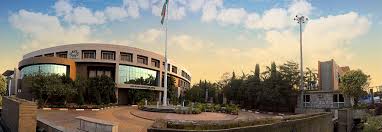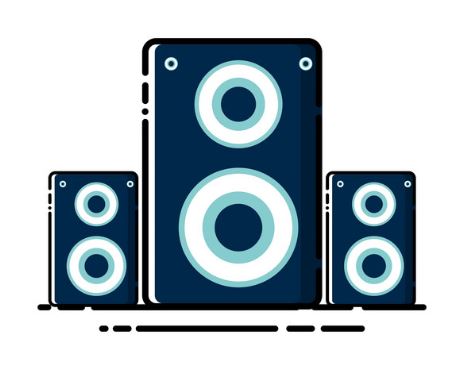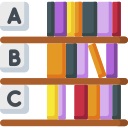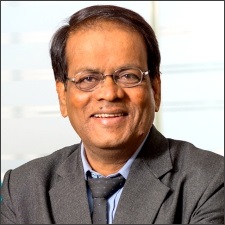
KIIT Kalinga Institute of Industrial Technology Bhubaneswar
However, the foundation year of the University is considered to be 1997, when undergraduate and postgraduate programs in Engineering, Management, and Computer Applications were introduced. In 2007, the university expanded significantly with the addition of new schools, including the School of Law, Biotechnology, Medical Sciences, Dental Sciences, Nursing, Mass Communication, Film and Media, Fashion, and KIIT International School.
Since then, KIIT has experienced remarkable growth, becoming a hub for professional education for approximately 40,000 students from across India and 2,000 international students representing 65 countries. With an alumni network of over 100,000 individuals excelling in academics, corporate sectors, civil services, and entrepreneurship, KIIT continues to leave a lasting impact.
Highlights
Kalinga Institute of Industrial Technology (KIIT), established in 1992-93 as an industrial training institute, began offering undergraduate and postgraduate programs in Engineering, Management, and Computer Applications in 1997. In 2007, it expanded with schools in Law, Biotechnology, Medical Sciences, Dental Sciences, and more.
Located in Bhubaneswar across 8,900 acres, KIIT boasts over 3,000 faculty and researchers, 15,000 staff, and strong national and international accreditations.
|
Campus Name |
Kalinga Institute of Industrial Technology (KIIT) |
|
Location |
Bhubaneswar |
|
Establish date |
1997 |
|
Institution type |
Private |
|
Recognition |
AICTE |
Kalinga Institute of Industrial Technology Bhubaneswar Admission
Kalinga Institute of Industrial Technology (KIIT) Admission Process
Eligibility
Undergraduate (UG) Courses:
- B.Tech: Requires a minimum of 60% in Class 12 (Physics, Chemistry, and Mathematics) and a valid score in KIITEE (KIIT Entrance Examination).
- Law: Minimum 45% in Class 12 and a valid KIITEE or CLAT score.
- Medical: Admissions through NEET.
Postgraduate (PG) Courses:
- MBA: Graduation with 50% aggregate and a valid CAT, XAT, MAT, or KIITEE Management score.
Doctoral Programs (Ph.D.):
- A master’s degree with at least 55% marks and performance in a written test/interview.
Admission Process
- Most admissions are based on the KIITEE, a university-level entrance exam.
- National-level test scores (e.g., NEET, CAT, GATE) are also accepted for certain courses.
Kalinga Institute of Industrial Technology Bhubaneswar Course
KIIT offers a diverse range of undergraduate (UG), postgraduate (PG), and doctoral (Ph.D.) programs across various disciplines.
School of Civil Engineering
- Bachelor of Technology (B.Tech) in Civil Engineering
- Master of Technology (M. Tech) in Civil Engineering (Construction Engineering & Management)
- Master of Technology in Civil Engineering (Structural Engineering)
- Dual Degree (B.Tech & M.Tech)
- Dual Degree (B.Tech & MBA)
School of Mechanical Engineering
- Bachelor of Technology (B.Tech) in Mechanical Engineering
- B.Tech in Mechanical Engg. (Automobile)
- B.Tech in Aerospace Engineering
- B.Tech in Mechatronics Engineering
- B.Tech in Production Engineering
- Master of Technology (M. Tech) in Mechanical Engineering (Manufacturing Process & System)
- Master of Technology (M. Tech) in Mechanical Engineering (Thermal Engineering)
- Master of Technology (M. Tech) in Mechanical Engineering (Machine Design)
- Dual Degree (B.Tech & M.Tech)
- Dual Degree (B.Tech & MBA)
School of Electronics Engineering
- Bachelor of Technology (B. Tech) in Electronics and Telecommunication Engg
- B. Tech in Electronics and Electrical Engg.
- B. Tech in Electronics and Instrumentation Engg.
- B. Tech in Electronics & Computer Science Engg.
- B. Tech in Electronics & Control System Engg
- Master of Technology (M. Tech) in Electronics and Telecommunications Engineering (Spl-Communication Engineering)
- Masters of Technology (M.Tech) in Electronics and Telecommunications Engineering (Spl-VLSI Design & Embedded System)
- Masters of Technology (M.Tech) in Electronics and Telecommunications Engineering (RF & Microwave)
- Dual Degree (B.Tech & M.Tech)
- Dual Degree (B.Tech & MBA)
School of Electrical Engineering
- Bachelor of Technology (B. Tech) in Electrical EngineeringMaster of Technology (M. Tech) in Electrical Engineering (Power Electronics & Drives)
- Master of Technology (M. Tech) in Electrical Engineering (Power Energy System)
- Master of Technology (M. Tech) in Electrical Engineering (Power System Engineering)
- Dual Degree (B.Tech & M.Tech)
- Dual Degree (B.Tech & MBA)
School of Computer Engineering
- Bachelor of Technology (B. Tech) in Computer Science Engineering
- B. Tech in Computer Science & Communication Engg.
- B. Tech in Computer Science & Systems Engineering
- B. Tech in Information Technology
- M. Tech in Computer Science & Engineering (SPL: Computer Engineering)
- M. Tech in Computer Science & Information Security (SPL:Information Securities)
- M. Tech in Computer Science & Engineering (SPL: Data Analytics)
- M. Tech in Computer Science & Engineering (SPL: Software Engineering)
- Dual Degree (B.Tech & M.Tech)
- Dual Degree (B.Tech & MBA)
School of Computer Application
- M.C.A .
- B.Sc Computer Science
- B.C.A.
School of Architecture & Planning
- Bachelor of Architecture (B. Arch)
Kalinga Institute of Medical Sciences (KIMS)
- M.B.B.S
- PG Medical (M.D.)
- Master of Hospital Administration
Kalinga Institute of Dental Sciences
- B.D.S.
- Master of Dental Surgery (MDS)
Kalinga Institute of Nursing Sciences
- Basic B.Sc. in Nursing
- M.Sc. in Nursing
- General Nursing & Midwifery ( GNM )
School of Biotechnology
- M.Sc. Biotechnology
- M.Sc. Applied Microbiology
- Biotechnology-Dual Degree
School of Law
- B.A.LL.B
- B.Sc.LL.B.
- BBA.LL.B.
- LL.M
KIIT School of Management
- Bachelor of Business Administration (BBA)
- Master of Business Administration (MBA)
School of Rural Management
- MBA in Rural Management
- MBA in Agribusiness Management
School of Fashion Technology
- Bachelor of Fashion Design
School of Film and Media Sciences
- Bachelor in Film & Television production (BFTP)
School of Mass Communication
- Bachelor of Communication & Journalism
- Master of Communication & Journalism
School of Social, Financial & Human Sciences
- BA in Economics
- BA in Sociology
- BA in Anthropology
- Bachelor of Commerce
- BA in Psychology
- MA in Economics
- MA in Sociology
- MA in Anthropology
- Master of Commerce
Kalinga Institute of Industrial Technology Bhubaneswar Eligibility
KIIT has specific eligibility requirements for its undergraduate (UG), postgraduate (PG), and doctoral programs.
|
Course |
Duration |
Eligibility |
|
B. Tech |
4 Years |
passed 10+2 examination |
|
Biotechnology – Dual Degree (B.Tech & M.Tech) |
5 years |
passed 10+2 examination |
|
B.Sc Nursing |
4 years |
passed the qualifying 12th standard examination (10+2) |
|
BA LLB/BBA LLB/B.Sc LLB |
5 years |
10+2 pass or equivalent in any stream with at least 45% marks |
|
BBA |
3 Years |
Pass in 10+2 in any stream with at least 50% marks |
|
BCA |
3 Years |
Pass in 10+2 in any stream with at least 50% marks |
|
BSc |
3 Years |
|
|
Bachelor of Design(Fashion/Textile |
4 Years |
Pass in 10+2 or equivalent examination from a recognized Central |
|
Bachelor in Film and Television Production |
3 Years |
Pass in 10+2 or equivalent examination from a recognized Central |
|
Bachelor of Architecture |
5 Years |
pass 10+2 examination with 50% marks in Physics, Chemistry and Mathematics and also 50% marks |
|
B.Tech.-Lateral Entry |
3 Years |
Pass in three years diploma course in Engineering with at least 60% marks |
|
Bachelor of Communication & Journalism |
3 Years |
Pass in 10+2 or equivalent examination from a recognized Central |
|
Bachelor of Arts (B.A) |
3 Years |
Pass in 10+2 or equivalent with at least 50% marks. |
|
B.Design |
4 Years |
Pass in 10+2 or equivalent examination from a recognized Central |
|
B.Pharma |
4 Years |
Pass in 10+2 or equivalent examination with Physics, Chemistry Biology and English (PCBE) with at least 45% |
|
D.Pharma |
2 Years |
Pass in 10+2 or equivalent examination with Physics, Chemistry Biology and English (PCBE) with at least 45% |
|
B.Com |
3 Years |
Pass in 10+2 in any stream with at least 50% marks |
|
M.C.A. |
2 Years |
Any Graduate with minimum 50% marks in graduation |
|
M. Tech |
2 Years |
B.E. or B.Tech. or equivalent Degree |
|
M.Sc. (Biotechnology / Applied Microbiology) |
2 Years |
minimum 50% marks in graduation |
|
MBA |
2 Years |
minimum 50% marks in graduation |
|
MBA (Rural Management) |
2 Years |
minimum 50% marks in graduation |
|
MBA (Agribusiness Management) |
2 Years |
minimum 50% marks in graduation |
|
LLM (1 year) |
1 Years |
passed B.A.LLB/BBA LLB/B.Sc.LLB/B.L, degree or an equivalent degree. |
|
Master of Public Health |
2 Years |
|
|
MA in Economics |
2 Years |
Graduate or equivalent in any discipline with a minimum 50% marks |
|
MA in Sociology |
2 Years |
Graduate or equivalent in any discipline with a minimum 50% marks |
|
MA in English |
2 Years |
Graduate or equivalent in any discipline with a minimum 50% marks |
|
M.A Psychology (Hons) |
2 Years |
Graduate or equivalent in any discipline with a minimum 50% marks |
|
M.Arch (Urban Design) |
2 Years |
B.Arch degree with minimum 50% aggregate mark. |
|
Master of Communication & Journalism |
2 Years |
Graduation equivalent with at least 50% mark |
Kalinga Institute of Industrial Technology Bhubaneswar Review
KIIT, located in Bhubaneswar, Odisha, is widely recognized for its academic excellence, diverse programs, and vibrant campus life.
|
Placements |
4.1 |
|
Infrastructure |
4.6 |
|
Faculty & Course Curriculum |
4.2 |
|
Crowd & Campus Life |
4.5 |
|
Value for Money |
4.0 |
Kalinga Institute of Industrial Technology Bhubaneswar Ranking
Kalinga Institute of Industrial Technology (KIIT) is recognized for its academic excellence and global impact. In 2024, it ranked in the 601–800 band globally and secured 6th position among Indian universities in the Times Higher Education (THE) World University Rankings. In the QS Asia University Rankings, it was placed in the 351–400 band.
Kalinga Institute of Industrial Technology Bhubaneswar Placement
The Kalinga Institute of Industrial Technology (KIIT) has an impressive placement record.
|
Particular |
Detail |
|
Average CTC |
8 Lakhs |
|
Companies over 20LPA |
20+ |
|
Job Offers |
5000+ |
|
Recruiters |
400+ |
Kalinga Institute of Industrial Technology Bhubaneswar Recruiter
Kalinga Institute of Industrial Technology (KIIT) has a strong track record of placements, with participation from over 350 top recruiters in 2023.
|
Amazon.com |
Samsung |
Tata Power |
Bosch Ltd |
|
Barclays Bank |
XL Dynamics |
Tech Mahindra |
Nestle |
|
Intel |
Wipro |
shapoorji pallonji |
Bharat Biotech |
|
Microsoft |
Voltas |
SAP |
Evolva |
Faculty (10)
';|
S.no. |
Faculty |
|
1. |
Abinash Tripathy |
|
2. |
Ajit Kumar Sahoo |
|
3. |
Bibhuti Bhusan Dash |
|
4. |
Bishnupriya Panda |
|
5. |
Dr. Kshyana Prava Samal |
|
6. |
Amrita Mishra |
|
7. |
Archana Ghatak |
|
8. |
Bhawna Gupta |
|
9. |
Prof. Ganesha H. S. |
|
10. |
Prof. Jyotiranjan Gochhayat |
Facilities

AC Classrooms

Auditorium

Banks Facilities

Cafeteria

Convenience Store

Dance Room

Design Studio

Gym

Hostel

Labs

Medical Facilities
_facility.png)
Moot Court (Law)

Music Room

Ransomware by ./M789

Shuttle Service

Sports Complex

Wi-Fi Campus
Contact
Patia, Bhubaneswar, Odisha, India Pin: 751024
admission@kiit.ac.in
-
PGDM-Post Graduate Diploma in Management
Total Fee: INR 745000
-
B.Com Bachelor of Commerce
Total Fee: INR 240000
-
PGDM-Post Graduate Diploma in Management
Total Fee: INR 745000
-
B.Com Bachelor of Commerce
Total Fee: INR 240000
-
PGDM-Post Graduate Diploma in Management
Total Fee: INR 745000
-
B.Com Bachelor of Commerce
Total Fee: INR 240000
-
PGDM-Post Graduate Diploma in Management
Total Fee: INR 745000
-
B.Com Bachelor of Commerce
Total Fee: INR 240000
Highlights
- International Institute of Business Studies (IIBS) is an AICTE Approved college which is recognized by Ministry of HRD, Government of Indias
- IIBS rated India’s No.1 emerging B-School in placement by Samaja Parivarthana
- Faculty of IIBS consists of experienced corporate faculty with 65% Ph.D. holders
- Ranked 2nd among 'Top 10 Southern B Schools' by Silicon India, 2017
- Ranked 3rd in Placement among the Best B-School in India 2017 by Silicon India
Modern Facilities
- Smart Classroom: IIBS provides fully equipped classroom with air-conditioned, projectors, remote controlled LCD and high speed connected computers and cordless microphones
- Library: It is fully equipped by highly information recourses like latest periodicals, reference texts, management text books, national and international journals and DVDs and well organized
- Digital Library: Students of IIBS can be access the digital library through any computers by using their ID and password
- Auditorium: IIBS auditorium is fully furnished and laced with all modern devices to more impactful view
- Hostel: IIBS provides hostel accommodation for boys and girls with mesh facility
Conducting IIMs have been changed the pattern of the CAT exams several times over the years. It is extremely beneficial for the aspirants to know the CAT paper pattern as it helps in preparation and the aspirants can prepare according to the pattern and weightage of the topics.
Overview of the Exam Pattern of CAT 2020
| Mode of the Exam | Online Only |
|---|---|
| Total number of Questions | 100 |
| Total Marks | 300 |
| Duration of the Examination | 3 hours (180 minutes) |
| Sectional Division of the Paper | 3 sections |
| Types of the Questions | Both MCQs and Non MCQs |
| Marking Scheme |
For Correct Answers → +3 marks For Incorrect Answers → -1 mark For Unattempted Questions → No marks |
| Name of the Sections |
1. Verbal Ability & Reading Comprehension 2. Logical Reasoning & Data Interpretation 3. Quantitative Aptitude |
This Exam is conducted once in a year usually in the month of November on online mode and it is expected that this year this exam will held in the last week of November. The question paper contains 100 questions to be solved in 3 hours. 3 marks are assigned for correct answer and 1 mark is deducted for wrong answer in CAT Exam. English is the only medium of answering the questions. Each question consists of four choices from which only one is correct, candidates have to select the right answer from the given options.
CAT question paper consists of three sections divided as
- 1. Verbal and Reading Comprehension (VARC)
- 2. Data Interpretation & Logical Reasoning (DI & LR)
- 3. Quantitative Ability (QA)
Overview of the Exam Pattern of CAT 2020
| Section’s Name | Number of Questions | Duration (in mins) |
|---|---|---|
| Verbal and Reading Comprehension (VARC) | 34 | 60 |
| Data Interpretation & Logical Reasoning (DI & LR) |
VA → 10 Questions RC → 24 Questions |
60 |
| Quantitative Ability (QA) |
DI → 16 Questions LR → 16 Questions |
60 |
| Total | 100 | 180 minutes (3hours) |
Verbal Ability and Reading Comprehension Section
This section is a combination of two sub-sections namely Verbal Ability (VA) and Reading Comprehension (RC). The main focus of this section is on the English language skills of the candidates and how they understand and elucidate the paragraphs and Passages. This section consists of 34 questions, 10 questions of Verbal Ability and 24 questions of Reading Comprehension. Verbal ability sub-section consists of questions related to Para-jumbles, Summary based questions, Sentence Correction and Completion. The other sub-section, Reading Comprehension is based on the questions related to Vocabulary, title etc.
Logical Reasoning & Data Interpretation Section
This section is also divided into two sub-sections, one is Logical Reasoning (LR) and other is Data Interpretation (DI). A total of 32 questions are asked in this section, 16 questions from both the sub-section. LR section contains solvable questions generally from the topics like inequalities, symbol operations, direction sense test etc. On the other hand DI section is a little difficult and time-consuming section as it consists of several confusing data case lets questions. This section contains tricky question and a little mistake in understanding the case lets can lead the candidates to attempt all the questions from a particular set incorrectly.
Quantitative Aptitude Section
This section is a standalone section which comprises only numerical questions from different topics of Math. A total of 34 questions are asked in this section. This section contains questions based on Basic Arithmetic, Number System, Geometry, Algebra, Modern Math etc. The questions in this section ranges from easy to moderately high and can be answered easily with proper practice of the syllabus of Quantitative Aptitude.

|
Prof. Prabhakar H
B.Sc., PG in HRD, PG in Training & Development |

|
Prof. Prabhakar H
B.Sc., PG in HRD, PG in Training & Development |

|
Prof. Prabhakar H
B.Sc., PG in HRD, PG in Training & Development |

|
Prof. Prabhakar H
B.Sc., PG in HRD, PG in Training & Development |

|
Prof. Prabhakar H
B.Sc., PG in HRD, PG in Training & Development |

|
Prof. Prabhakar H
B.Sc., PG in HRD, PG in Training & Development |
Facilities













CAT 2020 will be conducted in the following cities:
| Port Blair | Kurnool | Nellore | Tirupati |
| Vijaywada | Visakhapatnam | Chittoor | Itanagar |
| Dibrugarh | Guwahati | Silchara | Aurangabad |
| Gaya | Muzaffarpur | Patna | Chandigarh |
| lorem | lorem | lorem | lorem |
Contact Us
#75, Muthugadahalli, Bangalore North Jala Hobli, near International Airport airport(New Airport), Bangalore ( Karnataka)
admission@iibsonline.com









